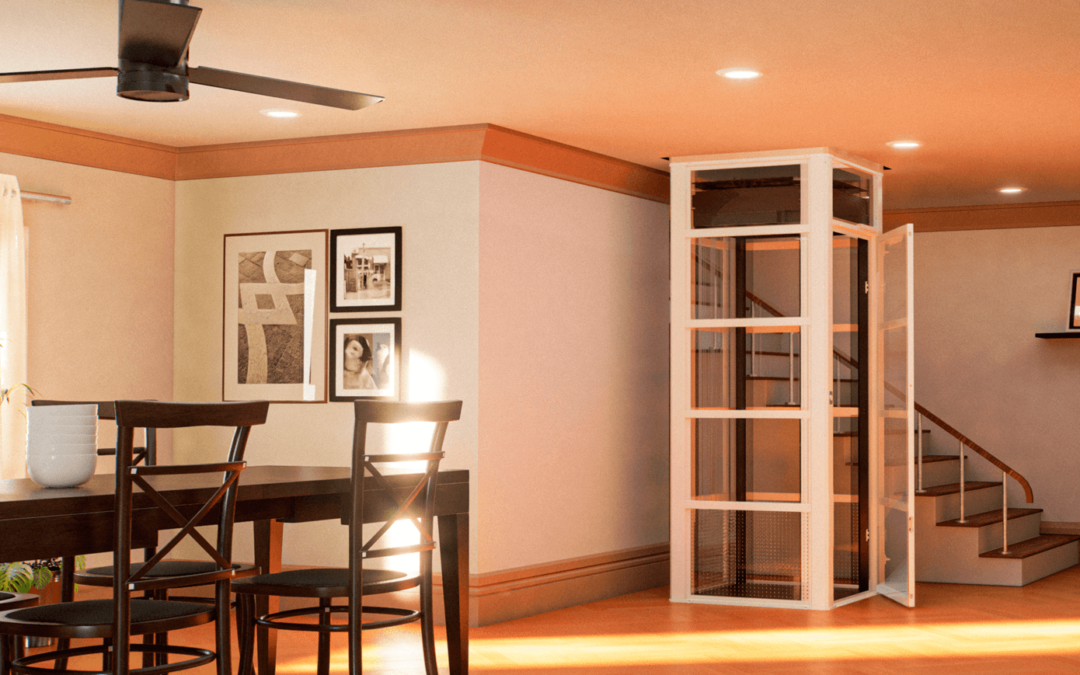Cube elevators, a cutting-edge vertical mobility solution, have revolutionized the way we move between floors in buildings. These compact yet powerful lifts have gained popularity due to their efficiency, space-saving design, and ease of installation. In this article, we will delve into the fascinating world of cube elevators, exploring their features, benefits, and real-life applications.
Here’s What You Need To Know About Cube Elevators
Number of Stops: 2-Stops
Cube elevators are designed to efficiently connect two specific floors within a building. With their 2-stop functionality, they cater to a wide range of structures, from private residences to commercial establishments. Their compact size and versatile nature make them an ideal choice for limited spaces while providing seamless access between floors.
Maximum Travel Distance: 20 ft
When it comes to vertical transportation over short distances, cube elevators excel. With a maximum travel distance of 20 feet, these lifts efficiently bridge the gap between adjacent floors. This feature makes them an excellent option for low-rise buildings or when retrofitting an existing space with modern elevator technology.
Number of Passengers: 2 Passengers
Cube elevators prioritize safety and comfort. They are designed to carry a maximum of two passengers, ensuring a smooth and secure ride between floors. While their passenger capacity might seem limited, these elevators are an optimal choice for residential use or small-scale commercial applications.
Rated Load: 450 lbs
Despite their compact size, cube elevators boast an impressive rated load capacity of 450 pounds. This allows them to carry not only passengers but also small items, making them a versatile choice for transporting groceries, laundry, or other goods between floors with ease.
External Cube Dimensions: 36” x 36” inches
The external dimensions of cube elevators are thoughtfully designed to occupy minimal space while maximizing functionality. With dimensions of 36 inches by 36 inches, these lifts can fit into tight corners or discreetly integrate into the architecture of a building without compromising available floor area.
Cube Height: 92” inches
Cube elevators are known for their sleek and streamlined appearance. With a height of 92 inches, they can effortlessly blend into the surroundings, offering a seamless aesthetic integration with the building’s interior design.
Speed: 40 fpm
While cube elevators prioritize functionality and safety, they also provide a reasonable travel speed of 40 feet per minute (fpm). This speed strikes a perfect balance between efficiency and passenger comfort, ensuring swift movement without feeling rushed.
Minimum Floor to Floor Clearance: 92”
When installing cube elevators, it is essential to consider the floor to floor clearance. The minimum requirement for this clearance is 92 inches. This clearance space guarantees that the elevator can move smoothly between floors without any hindrance.
Minimum Floor to Ceiling Clearance: 81”
To accommodate the vertical movement of cube elevators, a minimum floor to ceiling clearance of 81 inches is necessary. This ensures that the elevator car and passengers have enough headroom while traveling between floors, providing a comfortable experience.
Minimum Overhead Clearance: Standard Head Unit Machinery – 107”, Split-Unit Remote Machinery – 97”
Cube elevators offer different machinery configurations to suit specific installation requirements. For standard head unit machinery, the minimum overhead clearance needed is 107 inches, while for split-unit remote machinery, it reduces to 97 inches. This flexibility allows building owners to select the most suitable option for their space.
Through-Floor Penetration Required: 38” x 38”
During the installation process, through-floor penetration is required to accommodate the elevator’s operation. This entails creating an opening with dimensions of 38 inches by 38 inches to house the elevator’s components and ensure seamless vertical movement.
No Pit Required: Bottom Floor Must Be 100% Level As Elevator Rests On Existing Floor
Unlike traditional elevators that often require pits, cube elevators eliminate this need, offering added installation convenience. Instead of a pit, these elevators rest on the existing floor, provided it is 100% level, saving space and construction time.
Real-Life Applications
Cube elevators have found numerous real-life applications across various industries and settings. Let’s explore some of the most common uses:
- Residential Buildings: In private residences, cube elevators offer a practical and stylish solution for homeowners seeking vertical mobility. They blend seamlessly with home decor while providing easy access to different floors, catering to the needs of individuals with mobility challenges or simply adding a touch of luxury to the property.
- Retail Outlets: In retail spaces, cube elevators enhance accessibility, ensuring that customers of all abilities can navigate different levels of a store with ease. These lifts are especially useful in boutiques, showrooms, or multi-level department stores.
- Office Buildings: In office environments, cube elevators offer an efficient and space-saving solution for moving between floors. Their compact design and quick installation make them a popular choice for small to medium-sized offices or shared workspace facilities.
- Hotels: Cube elevators add a touch of modernity and convenience to hotels, providing guests with effortless access to various floors and amenities. Their stylish appearance complements the hotel’s interior design, contributing to a positive guest experience.
- Healthcare Facilities: In hospitals or clinics, cube elevators play a crucial role in transporting patients, medical staff, and essential medical equipment between floors. Their compact size allows them to fit into medical buildings with limited space while facilitating smooth patient care.
Conclusion
Cube elevators have emerged as a game-changer in the realm of vertical mobility. With their compact design, high load capacity, and versatile applications, they offer an ideal solution for connecting two floors in a wide array of settings. As technology continues to advance, cube elevators will likely become even more efficient and accessible, further transforming the way we move within buildings and improving the overall quality of life for people around the world.

